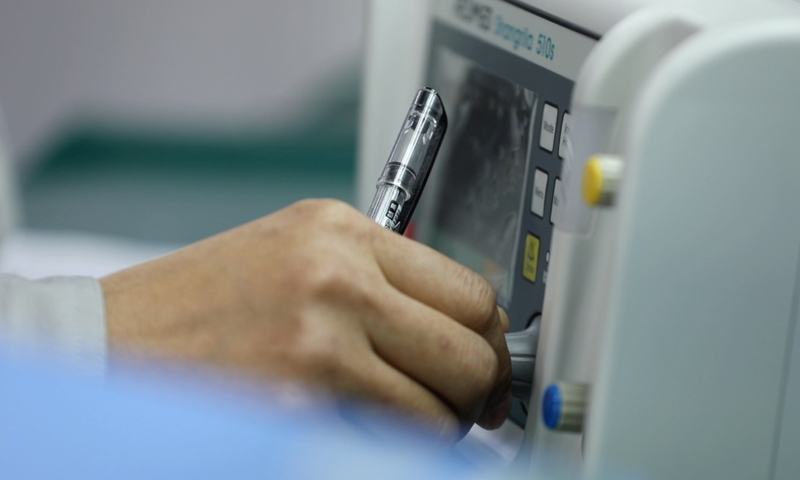SOURCE / MARKETS
Foreign healthcare providers boost Chinese market following COVID-19

A ventilator is being inspected at a production line in Hebei Province, April, 2020. Photo: CGTN
The first batch of high-end ventilators came off the production line at GE Healthcare's Chinese facility on Monday, a milestone for the US firm's localization in the Chinese market, which will also accelerate the integration of the Chinese healthcare sector with the world-class level.
It took three months from the approval of the ventilator project to completion of the products at GE Healthcare's facility in Wuxi, East China's Jiangsu Province.
GE Healthcare, the medical and healthcare arm of US-based General Electric Group, has five production bases in Beijing, Shanghai, Tianjin, Wuxi and Tonglu in East China's Zhejiang Province.
The ventilator line will soon be able to produce up to 1,000 units per month, which will be sold in global markets, according to GE Healthcare.
An industry insider who has been closely following the medical healthcare market, surnamed Liu, told the Global Times that the components in ventilators have become more localized over recent years, but the key parts still come from developed countries including Switzerland, the US and Japan.
"About 30 percent to 40 percent of a ventilator now relies on imports," said Liu.
So far, the components of GE Healthcare's high-end ventilators in Wuxi are sourced from nearly 50 suppliers globally.
Zhang Zhaohui, the general manager of GE's Wuxi facility, told Yicai.com that the firm has reached a localization rate of nearly 100 percent in the supply chain of mature equipment such as ultrasound in China.
It will take some time before the supply chain for ventilators, which has just been put into operation, can achieve a high rate of localization, according to Zhang.
As China aims to further open its medical market, foreign players are finding more opportunities to expand their business. And for the high-end healthcare sector, there is much growth potential following the COVID-19 crisis, analysts said.
A senior analyst in the medical industry surnamed Wang who is close to the government told the Global Times that the current registration approval and entry threshold for foreign-funded medical companies in China as well as China's international integration are all conducive for the entry of international innovative products into China, which can allow Chinese people to have direct access to the most advanced international technologies and pharmaceuticals.
"The huge potential of China's medical market is an indisputable fact," Wang noted. "Foreign investment in China's healthcare sector has been growing quickly since last year," he added.
However, it should be recognized that attracting international medical products into China does not mean that it can increase China's medical innovation capabilities, said Wang, suggesting that support for domestic independent innovation and industrial groups should also be enhanced in a bid to narrow the gap between domestic medical giants and their global peers.
"The overall performance of made-in-China ventilators has been greatly improved in the past five years thanks to the general improvement of personnel capabilities and basic production skills, especially for electronic products," said Liu.
Among electronic products, medical equipment has also benefited from the rapid development of technology.
"The level of our medical device industry is in accordance with the progress of China's overall manufacturing industry," Liu noted.
As the COVID-19 pandemic has gathered pace in the West during the past two to three months, Chinese ventilator makers have raced against the clock to guarantee adequate supplies of the life-saving machine.
Data from China's General Administration of Customs showed that from March 1 to May 16, China exported a total of 72,700 ventilators to overseas markets.

